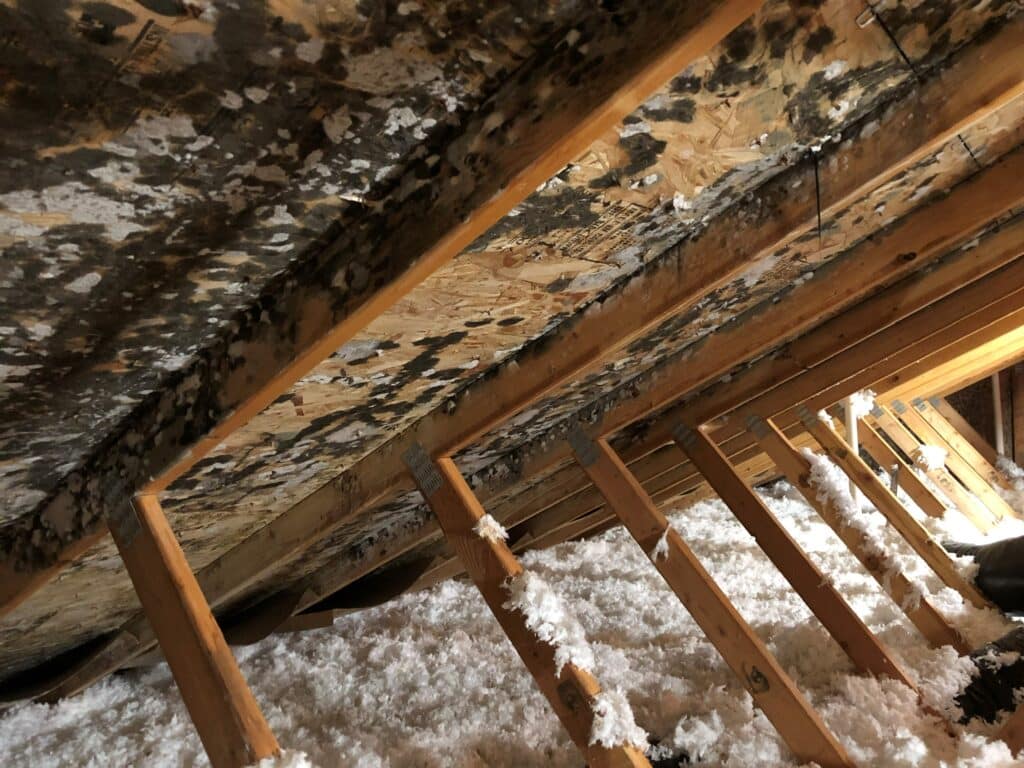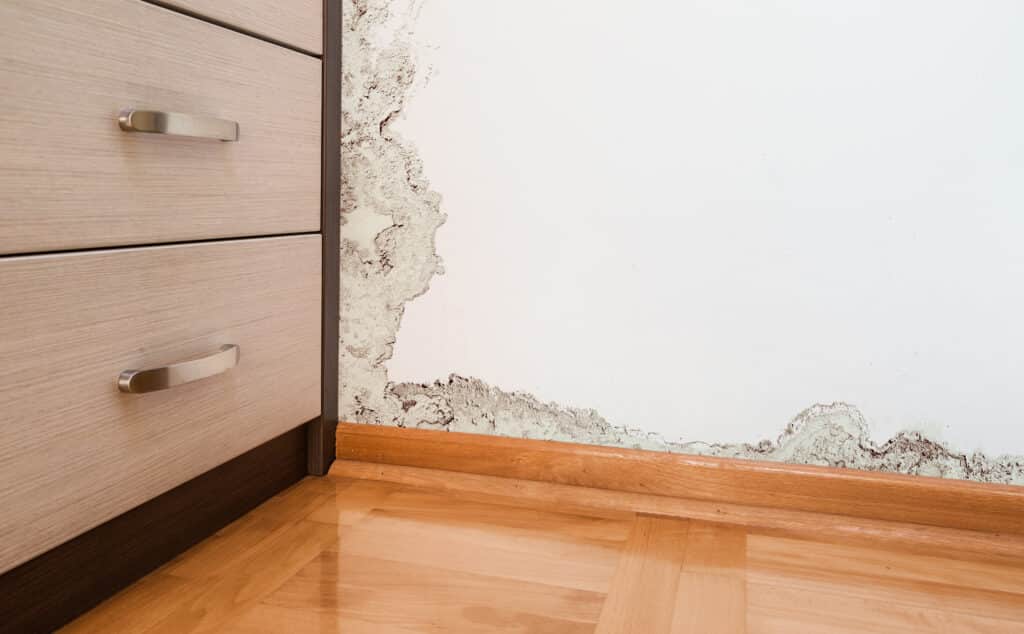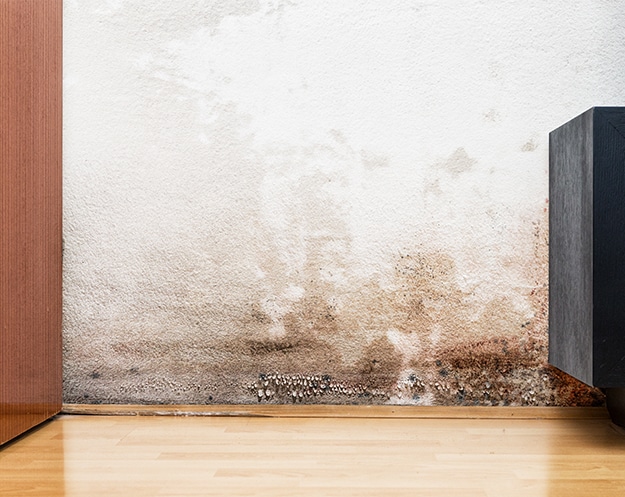Owning a home comes with many responsibilities to keep it functioning properly and aesthetically pleasing. A problem that can easily pop up for homeowners is mold growth. Mold may not appear intimidating, especially in the early stages, but it can quickly become a serious issue that can affect the health of residents and cause damage to the home.
To begin, homeowners need to understand what mold is, the risks associated with infestation issues, and how to prevent and remediate the problem.

What is Mold Growth?
Mold is a type of fungus that thrives in damp, humid environments and reproduces by releasing spores into the air. Its presence in homes poses health risks and structural damage. Mold exposure can lead to respiratory issues, allergies, and structural deterioration. Addressing mold is crucial to safeguard health and preserve the integrity of the home. Prolonged exposure to spores can also exacerbate respiratory conditions and trigger infections. Mold growth can also weaken building materials, leading to costly repairs. Because of these challenges caused by mold, it is essential to address issues promptly to create a safe and healthy living environment. Regular inspection, moisture control, and prompt remediation are key steps in preventing and mitigating mold problems.
Health Risks Associated with Mold Infestations
Exposure to mold can pose significant health risks, particularly for individuals with respiratory conditions, allergies, or weakened immune systems. Some of the health risks include:
Respiratory Issues: Mold spores can be inhaled into the lungs, which leads to respiratory symptoms such as coughing, wheezing, and shortness of breath. Prolonged exposure to mold can exacerbate existing respiratory conditions like asthma or bronchitis.
Allergic Reactions: Allergic reactions can be triggered in susceptible individuals, leading to symptoms such as sneezing, runny or stuffy nose, itchy eyes, and skin rashes.
Asthma Exacerbation: For people with asthma, exposure to mold can worsen symptoms and trigger asthma attacks. Exposure may lead to increased inflammation in the airways, making breathing more difficult.
Other Health Concerns: In addition to respiratory issues and allergies, exposure to certain types of mold can cause more severe health problems, such as fungal infections, mycotoxin poisoning, or systemic health effects.

Signs of Mold Infestation
Detecting a mold infestation in your home is crucial for preventing health risks and structural damage. Here are common signs of mold presence:
Visible Mold Growth: Mold often appears as fuzzy patches or discolored spots on walls, ceilings, floors, or other surfaces. It can range in color from white and gray to green, black, or brown.
Musty Odor: A persistent musty or earthy smell, especially in areas prone to moisture, like bathrooms, basements, or crawl spaces, may indicate hidden mold growth.
Water Damage: Stains, discoloration, or watermarks on walls, ceilings, or floors can signal past or ongoing water intrusion, which creates conditions conducive to growth.
Health Symptoms: Symptoms such as nasal congestion, coughing, sneezing, throat irritation, or worsening asthma or allergy symptoms may indicate exposure to mold spores.
Peeling Paint or Wallpaper: Mold growth behind wallpaper or under paint can cause it to bubble, peel, or crack.
Warped or Damaged Materials: Mold can cause wood, drywall, or other building materials to warp, bulge, or become distorted.
Condensation: Excessive condensation on windows, walls, or pipes may indicate high humidity levels, which can promote mold growth.
If you notice any of these signs, it is essential to investigate further and address the mold problem promptly to prevent further spread and mitigate health risks.
Prevention and Remediation Strategies
Preventing mold growth and effectively remediating existing mold infestations are essential for maintaining a healthy indoor environment. Here are some strategies to help with mold:
Prevention
- Control moisture levels by fixing leaks and ensuring proper ventilation.
- Monitor indoor humidity and maintain levels between 30-60%.
- Direct water away from the home’s foundation with proper grading and gutter maintenance.
- Seal cracks and gaps in walls, windows, and doors to prevent water intrusion.
- Use mold-resistant materials in moisture-prone areas.
Remediation
- Identify and address the source of moisture to prevent further mold growth.
- Clean affected surfaces with soap and water, and use mold inhibitors to prevent regrowth.
- Discard heavily contaminated materials that cannot be cleaned effectively.
- Monitor and maintain proper ventilation and moisture control measures to prevent mold recurrence.
By implementing these strategies, homeowners can effectively prevent mold growth and mitigate existing mold issues.

Choose Nook & Kranny
While there are ways to treat mold yourself, professionals can address mold in ways that are not easy for homeowners. Our professional team at Nook & Kranny has specialized training, knowledge, and experience in identifying and effectively addressing mold problems. We understand the complexities of mold growth and know how to properly remediate it to prevent recurrence. Contact us today to schedule an appointment and get your home safe again.

